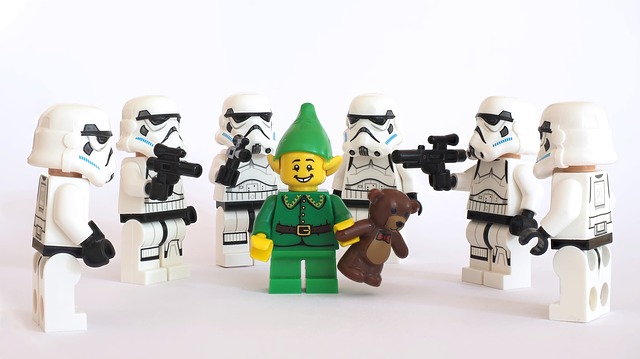Sometimes when we think of giving a toy to a child, the first thing that comes to mind is a gun, a war tank, a sword, or combat video games. If the little one is also a fan of a superhero, then it is likely that we will choose to give him the weapons that that character uses to save the world. It is an almost automatic decision that we make without realizing the influence that war toys can have on the psychological development of a child.
The emotional impact of war toys on children
If we give a child a war toy, they are likely to play with it and get involved in real battles with their friends. In fact, this type of game tends to amuse children a lot, but they also carry a huge risk since when children are still young they have difficulties to differentiate between fantasy and reality, so that it will be difficult for them to understand that war toys are an imitation of what happens in the real world. In fact, it is likely that even if he is not playing with his friends he will try to ‘shoot’ you sometime when he is angry or resolve differences with his brother in the same way.
This is also due to the fact that children do not have enough conflict resolution strategies when they are young, so that when they entertain themselves with war toys they learn to solve their problems in play in the easiest way: resorting to violence. Obviously, war toys by themselves do not incite violence, but when children realize that by being aggressive and using toy weapons they can get out of certain conflict situations, they are likely to want to transpolate that same strategy into the real world.
The key to letting the child have fun with war toys without affecting his psychological development
The defenders of war toys say that the fact of giving violent weapons, swords, rifles or video games to a child does not incite violence by itself since aggressive behaviors in children are determined above all by the education received at home and at school. In other words, gifting a child with war toys will not make him violent in the long run.
However, it is important to teach children to entertain themselves with war toys in a more appropriate way, so that they learn to differentiate between toy weapons and those in the real world, as well as to resolve the conflicts of everyday life in a more appropriate way. assertive without resorting to violence. A very effective strategy to explain this difference is to talk about it, pointing out that these weapons are only toys that you can use to entertain yourself and have fun with friends, but that in real life you should not use violent strategies to solve your problems.
It would also be convenient to delay the first war gift until the child is old enough to understand the difference between reality and fantasy, which occurs around 6 years. By this time the little one will also have developed some social skills and it will be easier for them to enjoy combat games with friends without extrapolating that aggressiveness to real life.

